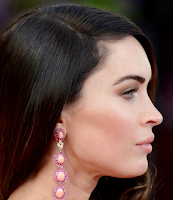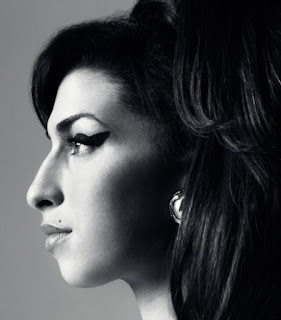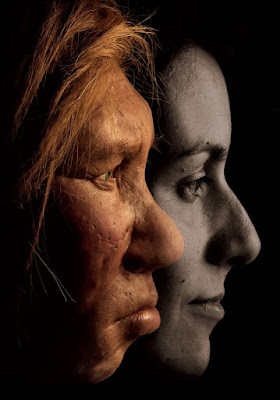Generally speaking, there are 3 different angles from which we can view a face and receive a different impression: frontal, profile, and semi-profile. All three of these significantly contribute to the overall "look" of an individual's face. As previously discussed, the most striking feature of the frontal view is the geometric shape that the face most closely resembles: Square, Oblong, Oval, Pentagon, or Round.
The profile view's most striking element is whether the face appears vertically straight and flat or sloped and protruding. In determining the shape of the profile, there are two important aspects: the facial angle (which is determined by the shape of the skull) and the facial features (which includes skeletal features such as the forehead and chin, as well as fleshy features like the nose).

The skull on the left has noticeable protrusion in the jaw region. The skull on the right is remarkably flat.

While both of these skulls have vertical/straight facial angles (no protrusion in the jaw region), their facial features would have looked quite different.
In life, the individual on the left would have had a sloped forehead, strong brow-ridges, a protruding nose, and heavy chin. Their face shape would have been a Square.
In life, the individual on the right would have had a straight forehead, minimal brow-ridges, a light nose, and light chin. Their face shape would have been an Oval or Oblong.
The facial angle is only part of what makes a profile appear straight. Heavy fleshy features will give the face a protruding look and prevent the profile from appearing straight. Women's faces tend to be less angular and have less bone growth than men's. Because of this, women's profiles are often straighter than men's.
While many Ovals have straight profiles, not everyone with a straight profile is an Oval. The most important indicator of whether someone is Aryan-looking is the face shape when viewed from the front.

It is not always possible to determine an individual's frontal face shape by looking at their profile.
Oval-leaving faces with vertical facial profiles.
Sloped facial profile (left) and facial straight profile (right).
Sloped profile (left) and straight profile (right).
Sloped profile (left) and straight profile (right).
The difference in forehead profile is not caused by simple tilting of the head, as some claim, but an actual physical difference in the shape of the forehead.

To give an ultimate example of the aesthetic difference between a straight and a sloped forehead, we can transform a single individual. A robust face with a protruding profile (left) photoshopped to have more gracile features, resulting in a straight profile (right).
The original face on the left has a sloped forehead, strong browridge, heavy nose, and heavy chin. The photoshopped version has a straight forehead, no browridge, light nose, light chin, and the jaw region itself appears to have been made smaller.
***
The stereotypical Jewish profile has a sloped forehead and a protruding nose. In protruding profiles (from any ethnic background), a receding hairline, weak chin, or protruding jaw often exaggerate the curvature of the face. Some have described this look as "fish faced" or the "Neanderthal look" (especially when referring to Jewish individuals with this look), but this is highly misleading because a non-vertical profile is neither indicative of Neanderthal nor Jewish heritage.
Yes, Neanderthals and archaic Homo sapiens had sloped foreheads, but so do many anatomically-modern humans. Heavy features and sloped foreheads are not the result of Neanderthal or "primitive" DNA, they are the result of increased bone growth after sexual maturity. In other words: they are non-Neotenous traits. A straight profile is the most youthful and Neotenous profile shape.

In non-Neotenous individuals, the facial features often become considerably more robust in adulthood.

Notice how protruding and heavy features only appear after sexual maturity. Even the young ape has a straight profile!
***
Silhouettes (sometimes called 'shadow portraits') date back to ancient times but became quite popular in the 18th century. They are unique because they give a purely 2-dimensional view of an individual. Silhouette portraits are made almost exclusively from the profile angle, because nearly all detail of the face is lost if taken from a frontal view, whereas most distinguishing facial features (such as the nose and forehead) are preserved if the silhouette is taken from the side. Due to their simple construction, silhouettes are a popular childhood art project. It is a fun exercise to see how much (or how little in the case of neotenous individuals) your silhouette has changed since your childhood!
One important feature of the profile view which silhouettes do not adequately show, and which has not yet been discussed, is the jawline. When viewed from the side, heavy (or 'strong') jaws tend to form a right angle, giving a boxy or 'squared' impression. Light jaws typically do not form this right angle, and instead appear diagonal or 'triangular'.

While the shape of the jaw cannot definitively tell us an individual's face shape, there does tend to be a correlation.
Preference for a cereal-grain-based diet over a meat-based diet is likely a major reason as to why the jaws of Neolithic-looking people have evolved to be so much smaller than those of Paleolithic-looking people.
The smaller jaw and and larger forehead and cranium is a trait which sets modern humans apart from apes and pre-human species. This is where the term "high brow" originates, referring to the perceived beauty, moral, and mental superiority of individuals with high, straight foreheads, compared to those with small, sloped foreheads.
While differences in forehead size and shape can sometimes be perceived from the frontal view, they are most noticeable from the profile. A straight forehead will always appear more "high brow" than a sloped forehead.
The low-brow Neanderthals actually had a larger brain than modern humans. However, it is shape, not size, which is most important in mental abilities. A straight profile results in a larger prefrontal cortex, which is responsible for high-level mental and emotional abilities such as empathy. In line with the concept of Original Nobility, it is possible those with the most Neotenous and youthful looks (i.e. Oval faces and straight profiles) are more likely to have purer emotions and greater empathy than any other shape.
Note that while sloped-foreheaded individuals can often be quite intelligent, in art intellectual characters with this trait are often portrayed as tribalistic and unethical. Perhaps, subconsciously, intelligence and IQ scores are not the mental traits which non-racists value most; instead it is empathy.



























_-_medial_view.png/480px-Prefrontal_cortex_(left)_-_medial_view.png)